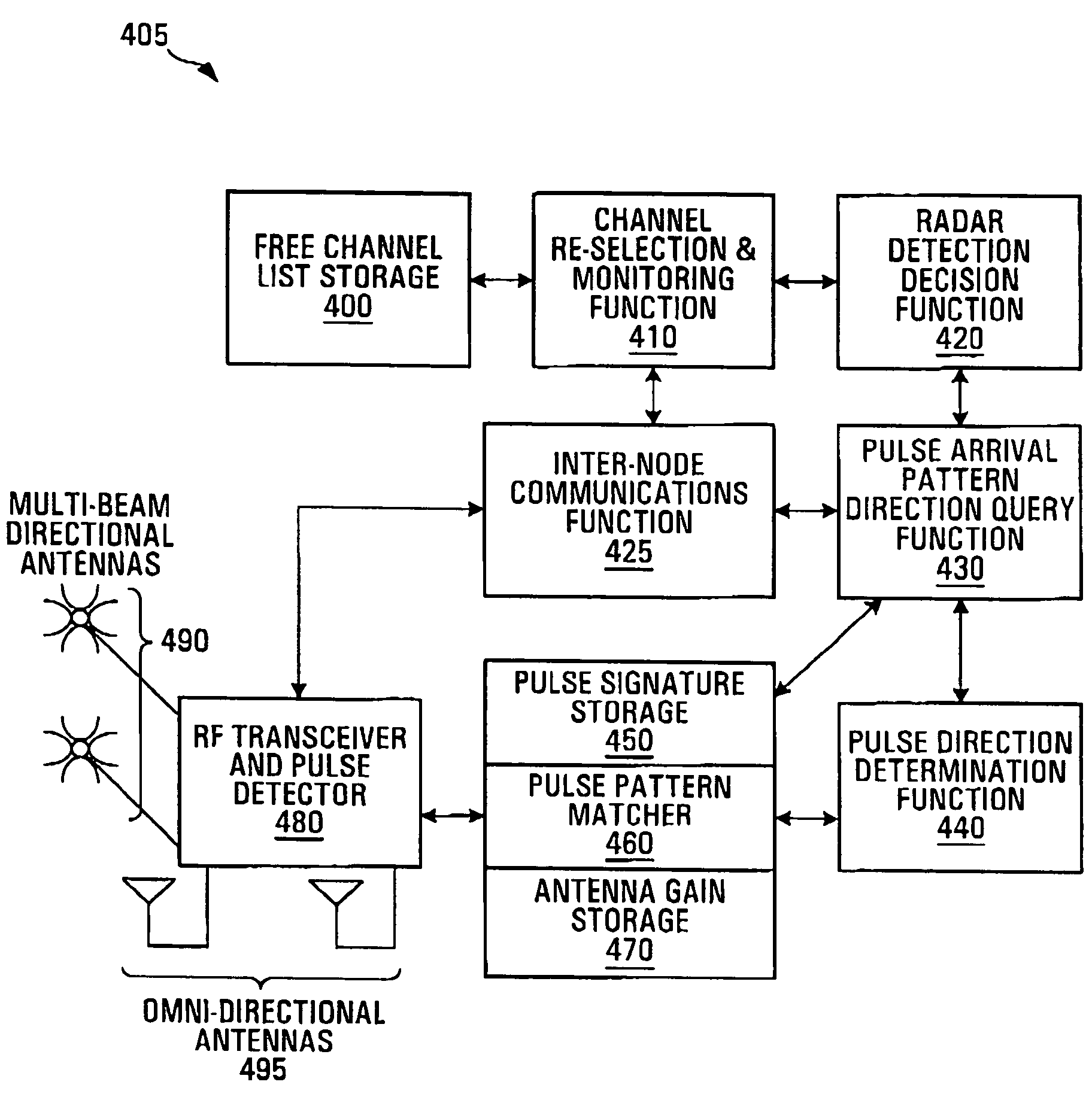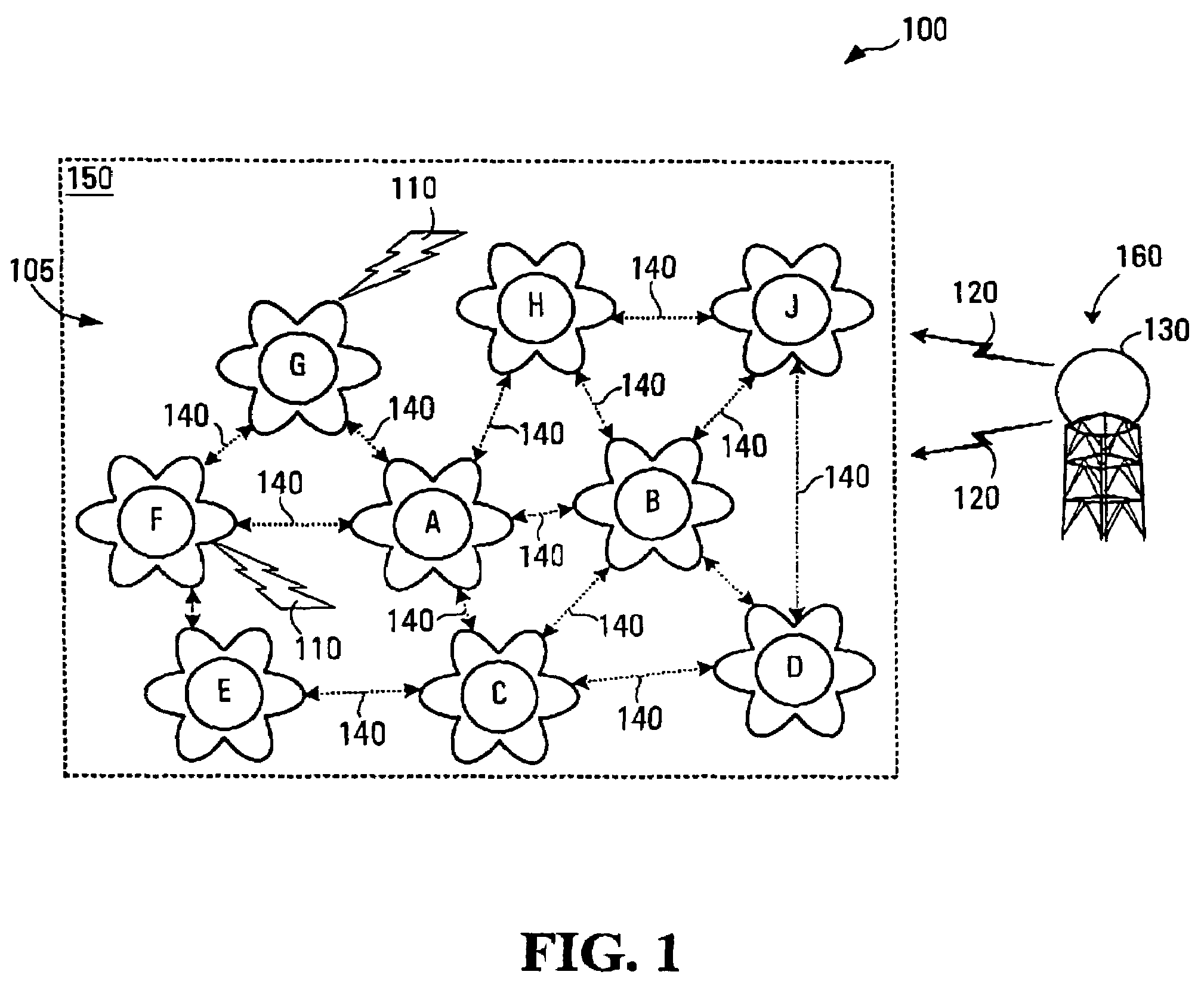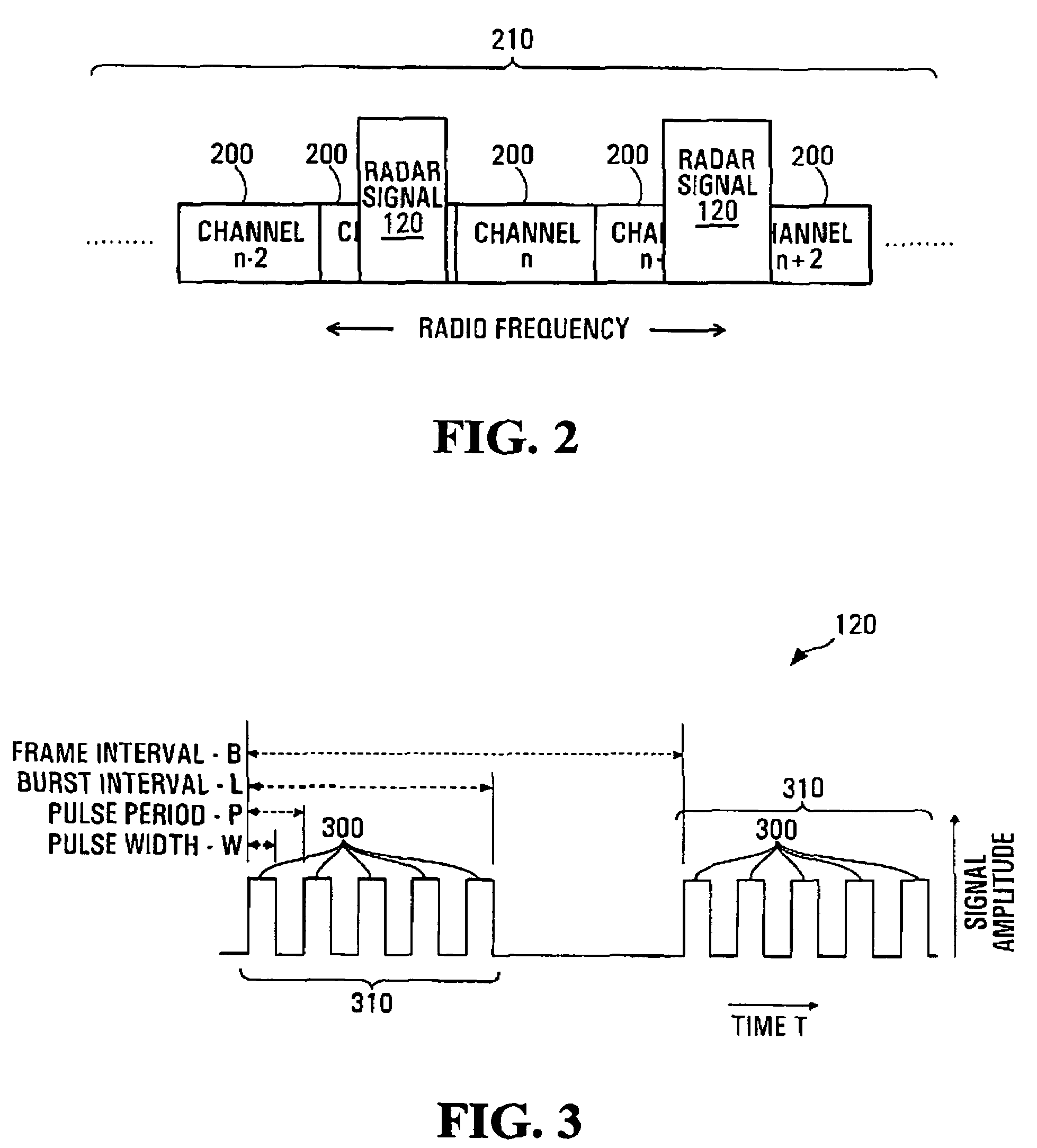System, method and apparatus for reliable detection of extra system signals for a multi-node RLAN system
a multi-node, reliable detection technology, applied in the direction of electrical equipment, transmission monitoring, network topologies, etc., can solve the problems of low efficiency, low reliability, and difficulty in detecting interfering signals by rlan devices from other in-band noise, so as to improve efficiency and improve the reliability of radar signal detection.
- Summary
- Abstract
- Description
- Claims
- Application Information
AI Technical Summary
Benefits of technology
Problems solved by technology
Method used
Image
Examples
Embodiment Construction
[0045]In a multi-node Radio Local Area Network (RLAN) communication system detection of the presence of other radio services, such as RADAR services for example, which may be sharing the same radio band allows the RLAN communications system to avoid use of the radio channels that the other radio services are using.
[0046]Embodiments of the invention make use of various combinations of techniques to achieve reliable detection and low incidence of false detections. The techniques, which are combined in various ways, involve for example:
[0047]Partial pattern matching of RADAR signature;
[0048]Pattern seen by a majority of neighboring nodes, using centralised or distributed databases for example;
[0049]Pattern seen in a same direction of arrival at antennas;
[0050]Shared scanning of unused channels by two or more neighboring nodes (Shared scanning);
[0051]Scanning in all directions using combined beam with gain compensation; and
[0052]Use of node at an edge of a coverage area to provide a det...
PUM
 Login to View More
Login to View More Abstract
Description
Claims
Application Information
 Login to View More
Login to View More - R&D
- Intellectual Property
- Life Sciences
- Materials
- Tech Scout
- Unparalleled Data Quality
- Higher Quality Content
- 60% Fewer Hallucinations
Browse by: Latest US Patents, China's latest patents, Technical Efficacy Thesaurus, Application Domain, Technology Topic, Popular Technical Reports.
© 2025 PatSnap. All rights reserved.Legal|Privacy policy|Modern Slavery Act Transparency Statement|Sitemap|About US| Contact US: help@patsnap.com



